Hapag-Lloyd Trials Biofuel
German shipping major Hapag-Lloyd announced that one of its ships recently refueled in Rotterdam with an eco-friendly biofuel, as part of its plan to reduce CO2 emissions."For the first time, the “Montreal Express” is being powered by so-called “B20” fuel, which consists of 80 percent low-sulfur fuel oil and 20 percent bio-diesel based on cooking oils and fats that had previously been used in the food service/catering industry," said a press note from the container transportation company.The biodiesel generates up to 90 percent less CO2 emissions than conventional fuels, it said.With this test, Hapag-Lloyd is taking another step towards reaching its ambitious climate-protection goals.“By the end of this year…
GCC Bunkers in Marine Fuel Processing Pact
Houston-based low sulfur specialists, GCC Bunkers (GCC) has reached a processing agreement with Texas International Terminals to produce IMO 2020 compliant 0.5% sulfur bunker fuel oil.The physical supplier of marine fuels said that the parties would also produce 0.1% ECA specification gasoil in the Houston, Texas area, starting in early 2020.“Our mission from the day we started GCC has been to provide solutions to our customers. Now, more than ever, the marine fuel supply business needs to provide absolute assurance of quality and reliability to its customers, and that is what we intend to do,” said GCC Bunkers’ Commercial Director,…
Largest Cargo Year Ever for Port of Indiana-Burns Harbor
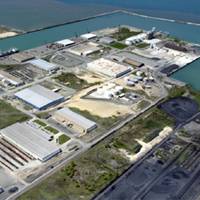
The Port of Indiana-Burns Harbor handled more shipments in 2014 than any year since the port opened in 1970. Total tonnage was up 30 percent over 2013 driven by strong shipments of steel, grain and salt. "It was a terrific year thanks to our port companies, steelmakers and businesses that use our port," said Rich Cooper, CEO for the Ports of Indiana. "Federal Marine Terminals, the port's terminal operator, and its labor force did a tremendous job handling the significant cargo increases that arrived at the port by ship and barge.
GEA’s CatFineMaster to Debut at SMM
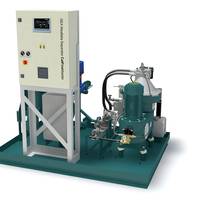
A solution for separating dangerous catalyst fines (cat fines) from fuel with one touch of the button: This is the new product GEA Westfalia Separator Group will be showcasing this year at the SMM 2014 in Hamburg. The company is continuing its clear line as a competent and innovative partner for the maritime industry. Stricter regulations and rules mean that ship operators constantly have to face new challenges. They also have to cope with the pressure of having to reduce operating costs and being efficient at the same time.
Peter De Vos Appointed Marine Propulsion Course Trainer
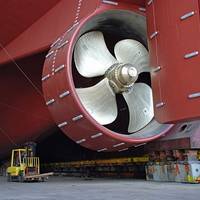
The ninth edition of the international HME Marine Propulsion training series starts in September. It will be a new experience for Peter de Vos, Assistant Professor of Marine Engineering at Delft Technical University (TU Delft). As the latest addition to the team, De Vos will work closely with Professor Douwe Stapersma in modules 1, 3 and 5. Peter De Vos graduated cum laude in 2008 on the modeling of a fuel processing plant for the application of fuel cells onboard vessels in the Ship Design, Production and Operation section of the Marine Engineering department at TU Delft.
Introducing MEISTer Disaster Recovery Support Robot
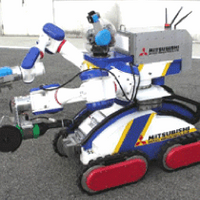
Mitsubishi Heavy Industries (MHI) prototype has two arms to assist in recovery work after disasters or severe accidents. MEISTeR (Maintenance Equipment Integrated System of Telecontrol Robot) can light-duty tasks in areas inaccessible by humans. By changing its arms' attachment tools, the robot can perform various tasks such as carrying objects, drilling and opening/closing of valves. Going forward MHI will strive for further improvements and explore demand for broad applications of the robot in crisis management.
The Nuclear Option
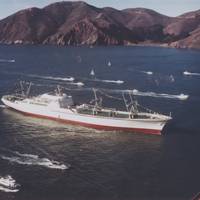
In the eyes of some, the March 2011 Fukushima Daiichi nuclear disaster was the event that would signal the end of nuclear power for electrical power generation and would end any hope of the world utilizing nuclear-powered commercial vessels other than the Russian barge carrier, SEVMORPUT and numerous Russian ice breakers. Contrary to the afore mentioned opinion, I believe that not only are selected-route nuclear powered commercial vessels good for the marine industry but they…
FuelCell Energy Wins US Navy UUV Contract
FuelCell Energy Inc. awarded US$3.8-million contract by U.S. Navy to develop power system for unmanned underwater vehicle (UUV). FuelCell Energy, Inc., a leading manufacturer of fuel cell power plants, announce a US$3.8-million contract award from the U.S. Navy to develop and test a Hybrid Solid Oxide Fuel Cell (SOFC)-Battery power system for large displacement undersea vehicle propulsion. The objective of the project is to develop a refuelable power system, with high energy density, that is suitable for undertaking long duration underwater missions of unmanned submersibles. The Hybrid SOFC-Battery system will be capable of generating 1,800 kilowatt hours of electricity during a 70 day mission with no exhaust discharged outside of the vehicle at any time.
A Case for Commercial Nuclear Power Vessels, Post the Fukushima Daiichi Nuclear Disaster
Russian ice breakers. Contrary to the afore mentioned opinion, I believe that not only are selected-route nuclear powered commercial vessels good for the marine industry but they also offer the world the most environmentally friendly and potentially the most economical and efficient way of shipping trans-ocean cargo. Although the Fukushima Daiichi disaster was a disaster of major proportions, we must not forget that it was initiated by a much more deadly and destructive disaster; a tsunami caused by a magnitude 9.0 Richter scale underwater earthquake. The nuclear disaster that occurred at the Fukushima Daiichi complex was not caused by inherent problems with the reactor…
Lubricant Technology Proven Tough Under Fire
When Texaco, now represented in the marine lubricants market by FAMM (Fuel and Marine Marketing), launched Taro 40 XL 40, the lubricant was designed to address pressing field problems in medium speed engines. Three years later FAMM is in a position to evaluate the performance in a large number of engines and to compare the field results with competitive lubricants. The pressing problems arose from a series of engine design and fuel processing changes. Although aimed at improving engine efficiency and making savings, the changes resulted in a series of difficulties. The best known are engine blackening, undercrown deposits, piston head corrosion, fouling of purifier heaters, increased oil consumption, base number depletion, oil scraper ring clogging and increased piston deposits.







